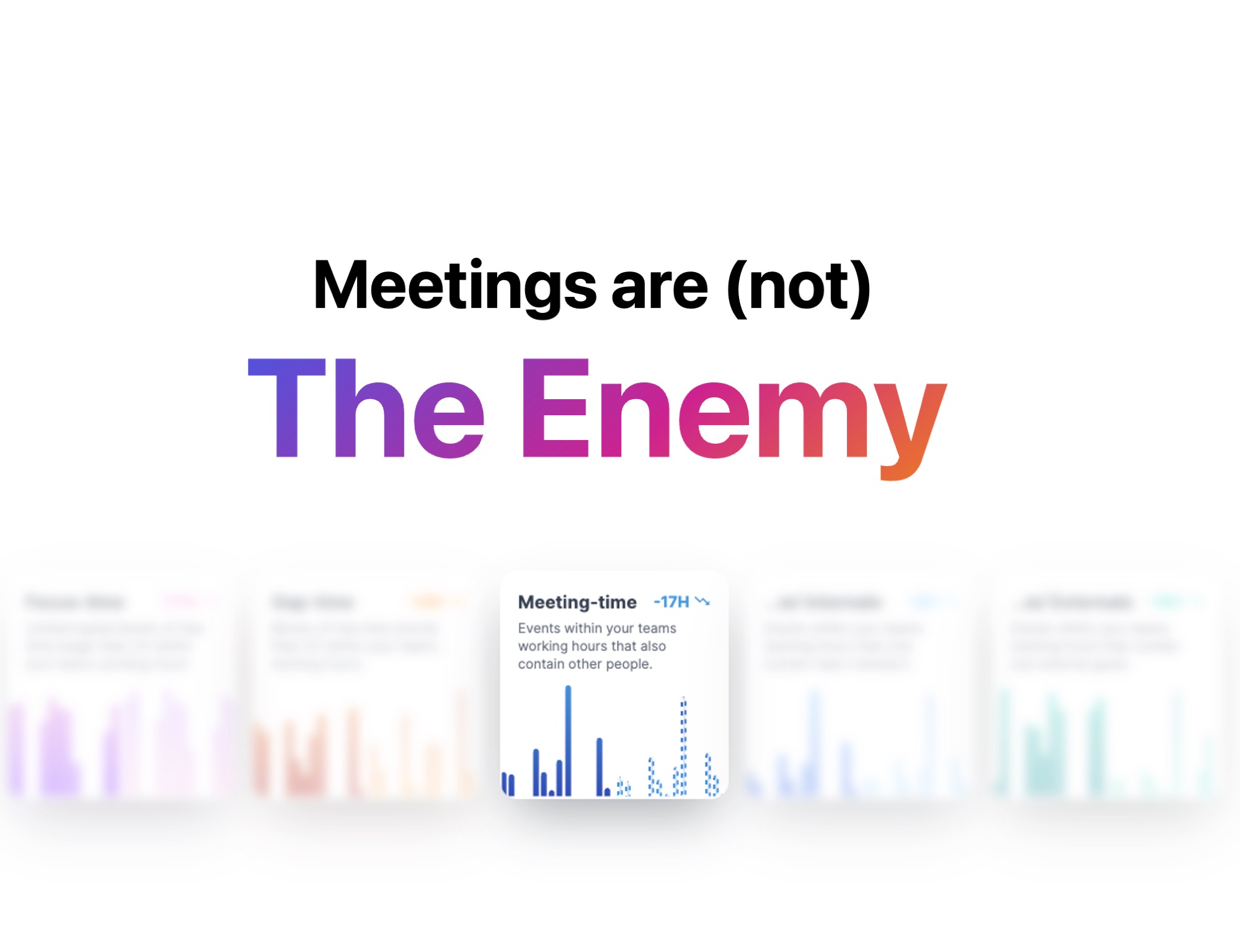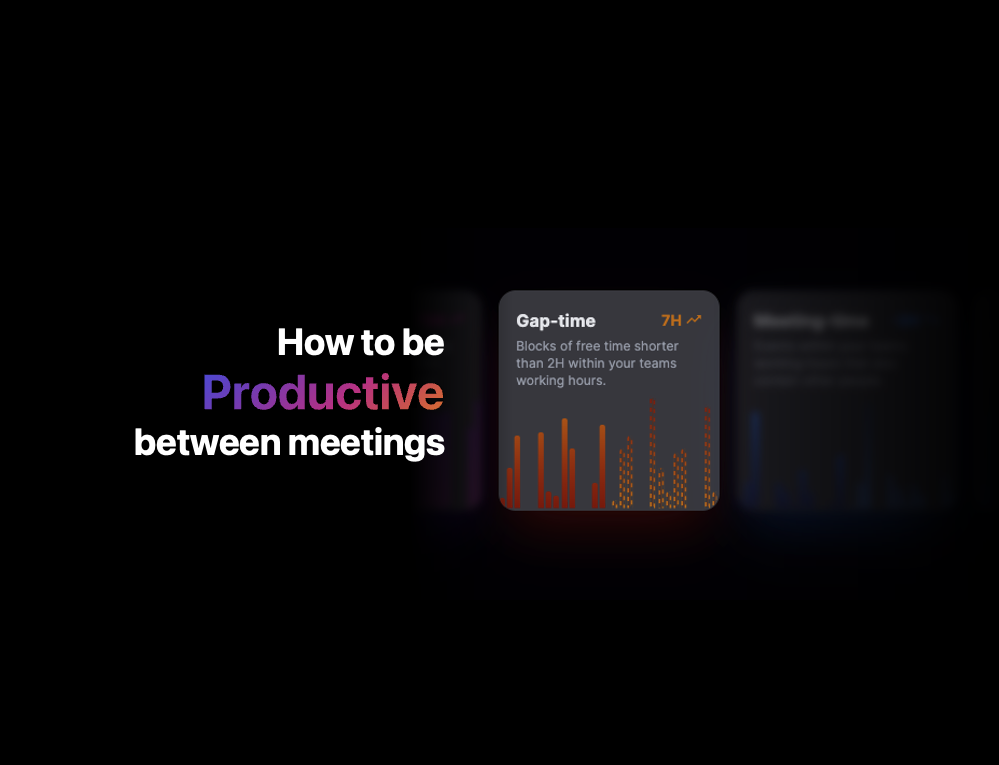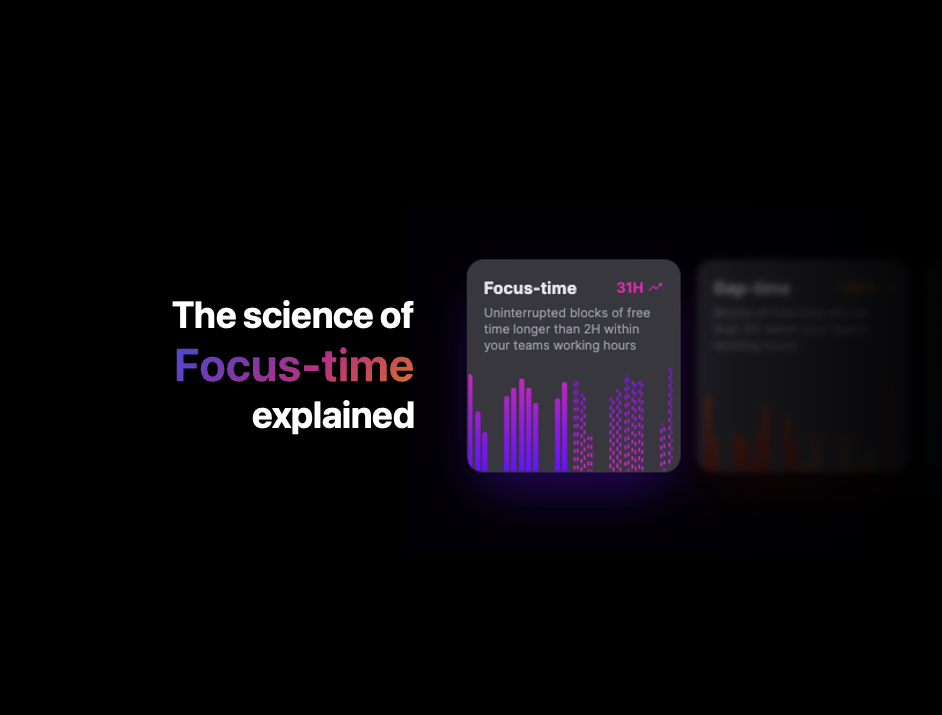The State of One-on-Ones: Survey Insights from Over 1,000 Managers and Employees
5 min read
Our survey of over 1,000 managers and employees reveals that while both managers and employees agree that one-on-one meetings are incredibly important, they disagree on how well they’re being done.
- Download a pdf version of the survey below here.
We asked a lot of open text questions in our survey. While this made it a lot more challenging to organize the information, it was a great way to capture less biased insights on people’s thoughts and feelings about one-on-ones. After reading through thousands of responses, you appreciate certain things that categorizing data into graphs will not always tell you.
Here are what we believe to be the most important things that we took away from the responses:
Managers and employees agree that one-on-ones are important…
While one-on-ones are a common practice in many organizations, people’s expectations and feelings about one-on-ones vary considerably. One thing managers and employees do agree on is that they are important.
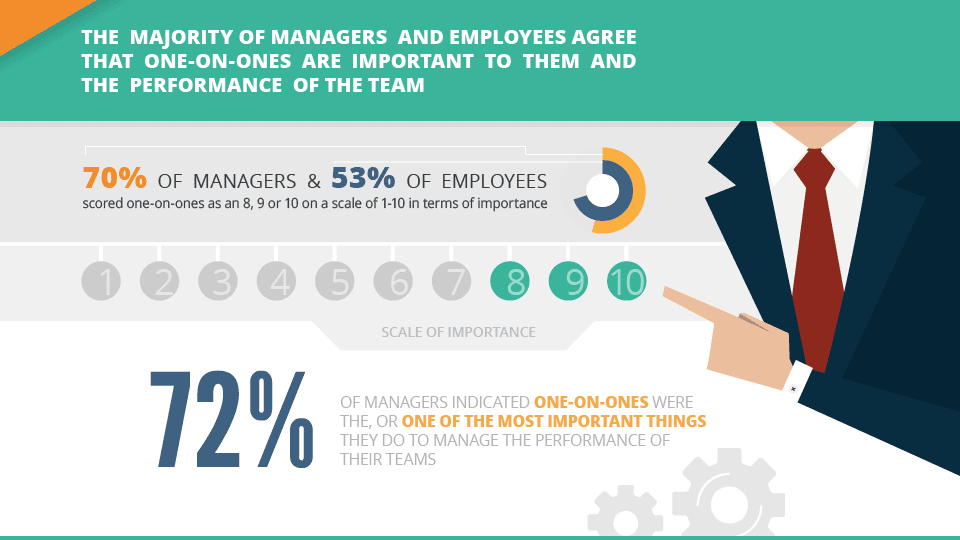
…but don’t agree on how well they’re being done
However, there isn’t necessarily agreement between employees and managers on how well they’re being done. Managers as a whole were more bullish on the positive impact one-on-ones were having on their team.
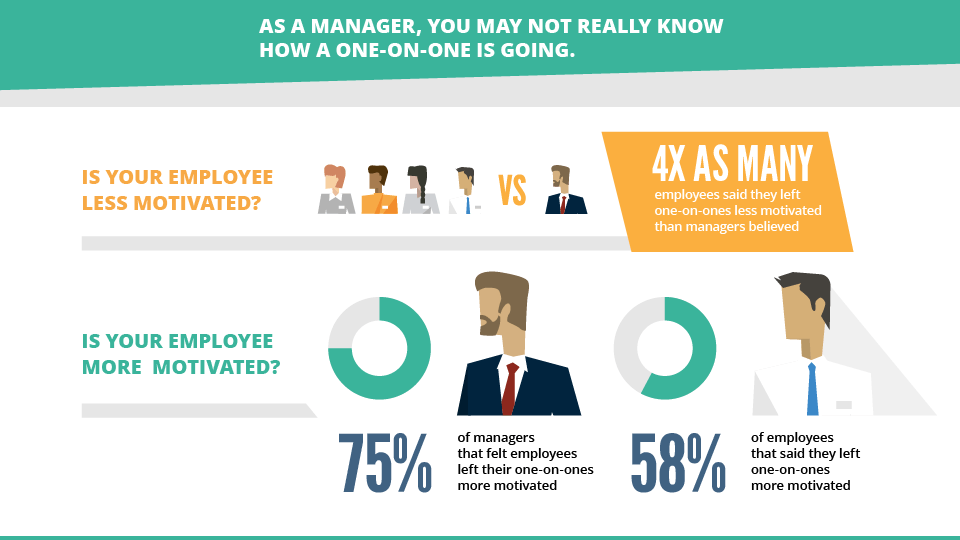
One-on-ones are motivating when they help employees be successful in their role
Let’s start with understanding what makes one-on-ones a motivating experience for employees. We categorized the open text responses into themes. You’ll see some examples of the responses aligned to categories in the image below. Half of the employees responding to the survey felt that the most motivating part of a one-on-one was getting the help they needed to be successful in their role.
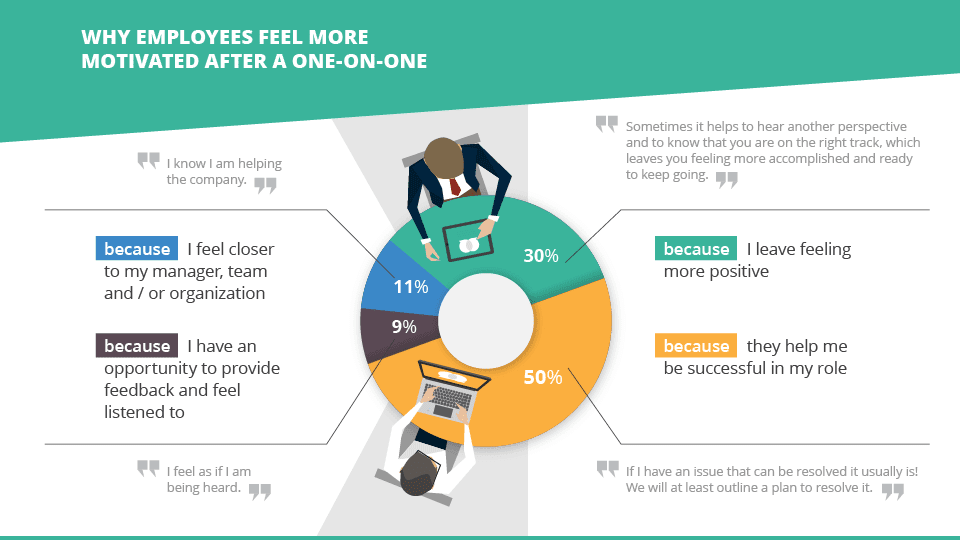
On the flip side, here are some of the examples of responses from the employees that completed the survey on what makes a one-on-one a demotivating experience.
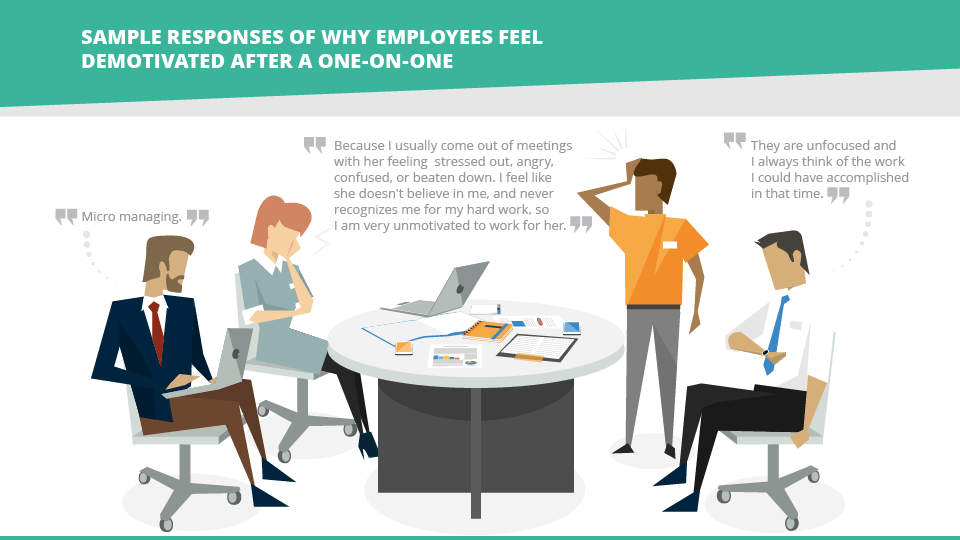
Managers and employees disagree on signs of a good (or bad!) one-on-one…
What was interesting about the responses to this question was that while there were some similar themes, the popularity of those themes in manager and employee responses were quite different. The most popular sign of a good one-on-one for managers was two-way communication with both the manager and employee actively participating in the conversation.
The sentiment for the most popular theme in the employee responses was subtly different. They focused more on the ability to have an honest conversation. For employees, a good one-on-one is one where they felt comfortable being open, direct and honest about what needed to be discussed without fear of being evaluated or judged.

The sign of a bad one-on-one also had differences in the popularity of different themes between managers and employees. One area that was common ground was a frustration if the meeting didn’t have a clear purpose, or there was no outcome to the meeting.
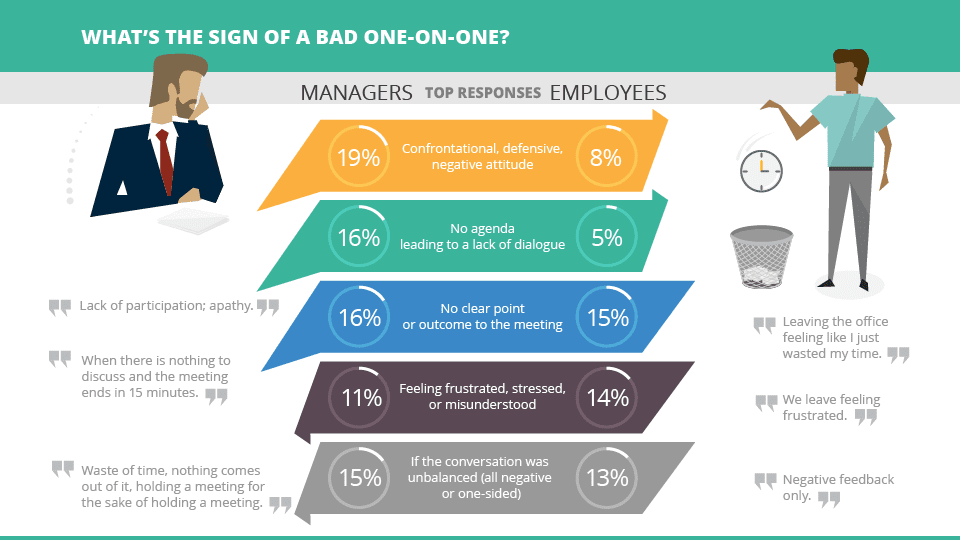
…but agree on what they love about one-on-ones
The themes for the most popular responses from managers and employees were slightly different, but overall there was a lot of common ground. For employees specifically, the clearest theme was that they liked how one-on-one allowed them to have a conversation with their manager that wasn’t possible during normal day-to-day interactions.
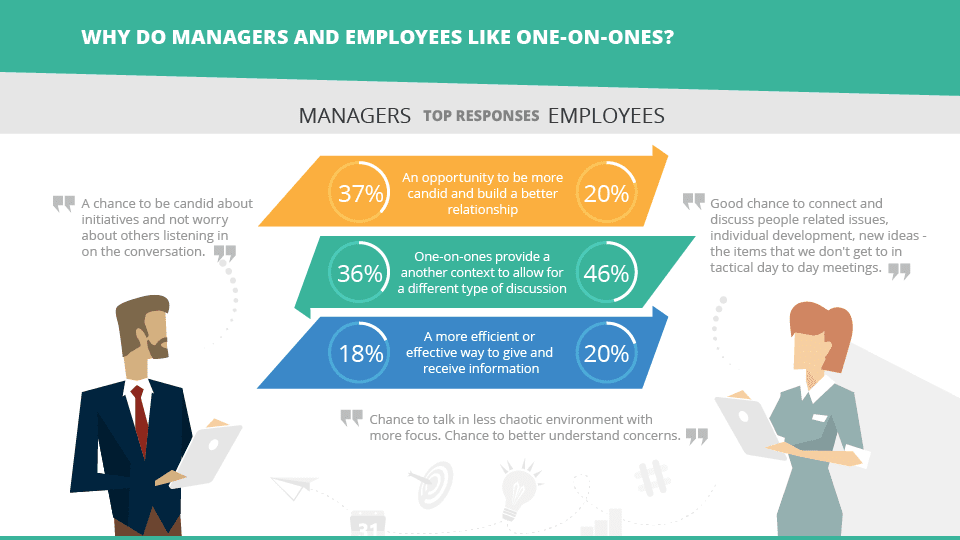
For managers, the biggest thing they didn’t like about one-on-ones was how much time it takes to do them in the middle of so many other priorities. The other interesting call out to the responses for this question is that many of the employees responded indicated that they didn’t like one-on-ones because the advice they were receiving in them wasn’t helpful.
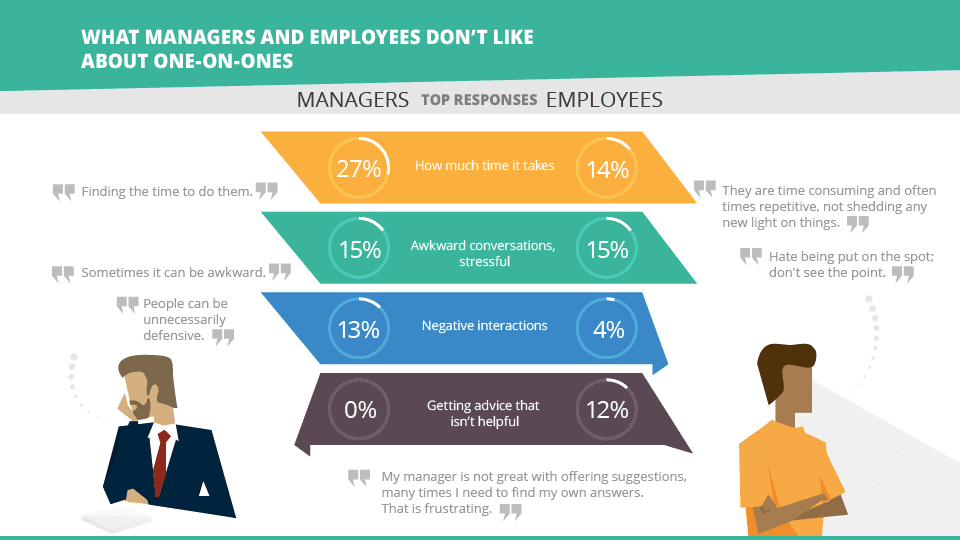
The best way to improve one-on-ones? An agenda.
The majority of one-on-ones had no meeting agenda that was shared prior to the meeting. Seeing how just this simple practice could have a positive impact on many of the responses to the questions above, it’s not surprising that adding an agenda was the most popular response on how to improve one-on-ones.
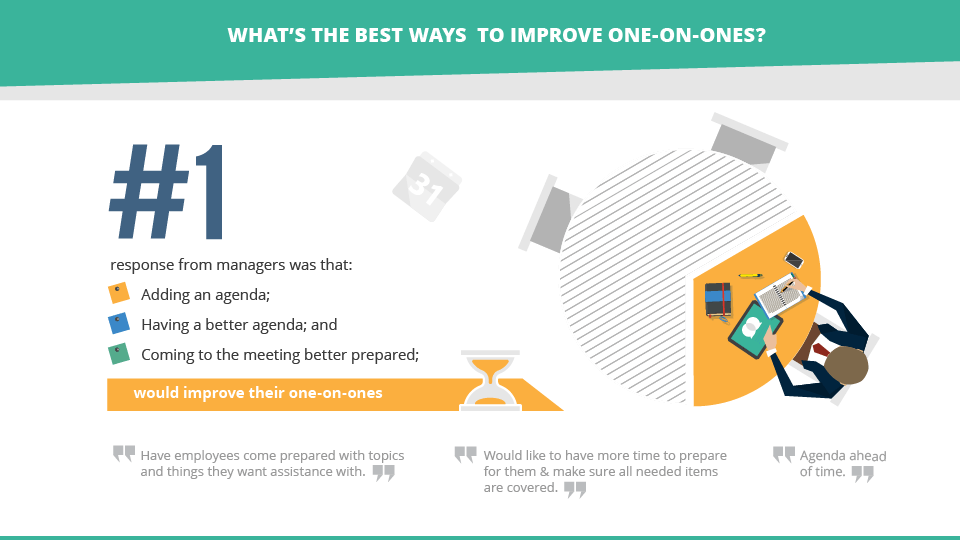
Other lessons
Here are some high-level takeaways for improving the quality of one-on-ones:
- Reinforce that one-on-ones are a priority with your team. Regardless of how you feel personally about them, you can be assured that several people on your team find them important and see them as a motivating or demotivating experience. So, make the commitment to make them great.
- Get aligned on what’s going to be discussed and why. Do this well in advance of the meeting. This allows both parties to arrive prepared to have a meaningful conversation and make the best use of the time. This is perhaps the most important thing to do consistently.
- Create the right environment for the conversation. Especially the most crucial conversations. Find a place that minimizes distractions. Choose a time when you won’t be stressed by other important deadlines or meetings. Block some time in advance of the meeting to compose yourself and get into the right mental and emotional state.
- Clearly document key points, outcomes, and action items. The best way to make sure you cover a lot of ground in one-on-ones is by not unnecessarily covering the same things over and over again. Make each one-on- one a continuation of the last.
- Don’t leave all the communication to the one-on-one itself. A lot can be covered between meetings through various other forms of communication. However, do keep it all centralized. Per the point above, keeping track of information and action items can be a major asset.
If all of this sounds like a lot, it is. Not because any of it is rocket science, but because at work we are always crunched for time, and it’s easy to let good habits slip.
However, if you believe, like we do, that the modern workplace has changed, and that we need more engaged, empowered and accountable employees to handle the challenges we face today, then making an investment in how you manage the relationship with your employees makes a lot of sense. For more ways to maximize the value of your one-on-one meetings, read our guide to one-on-one meetings.
Have better one-on-ones with SoapBox
